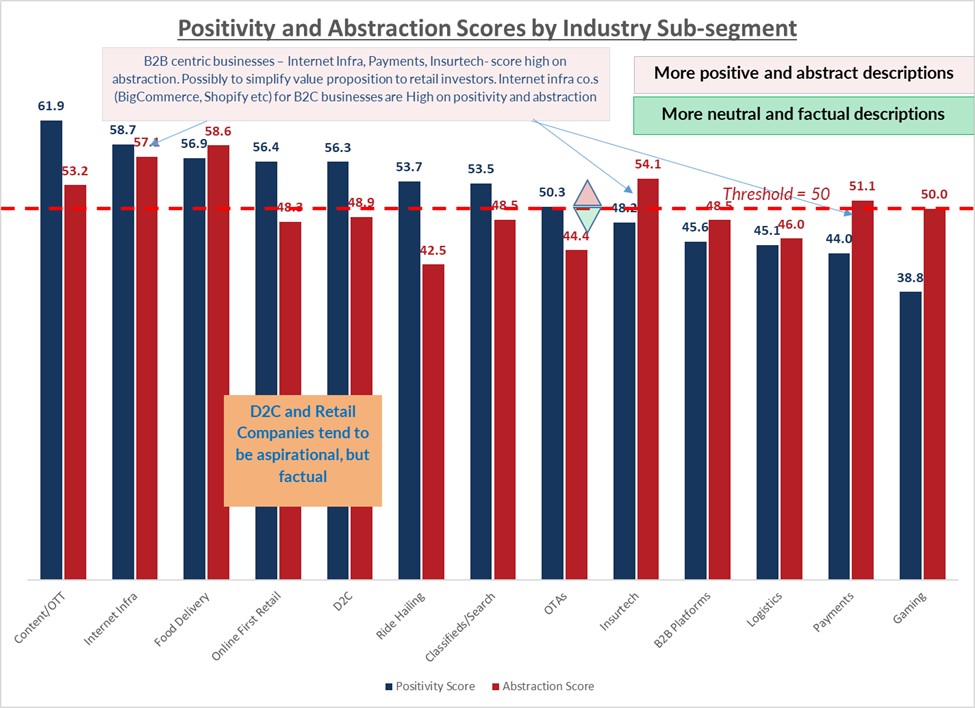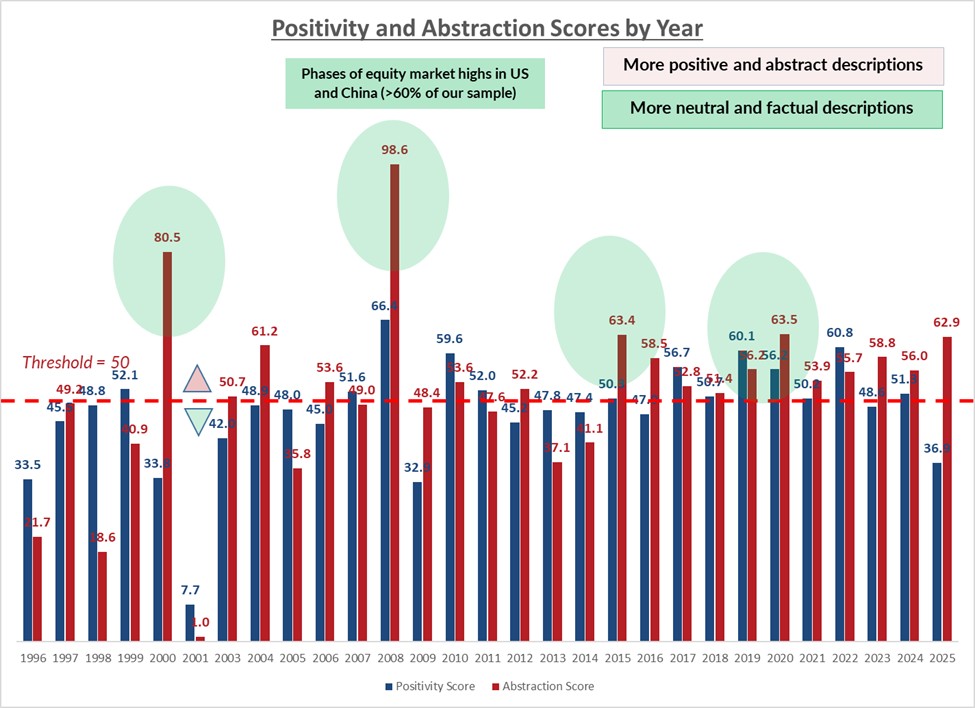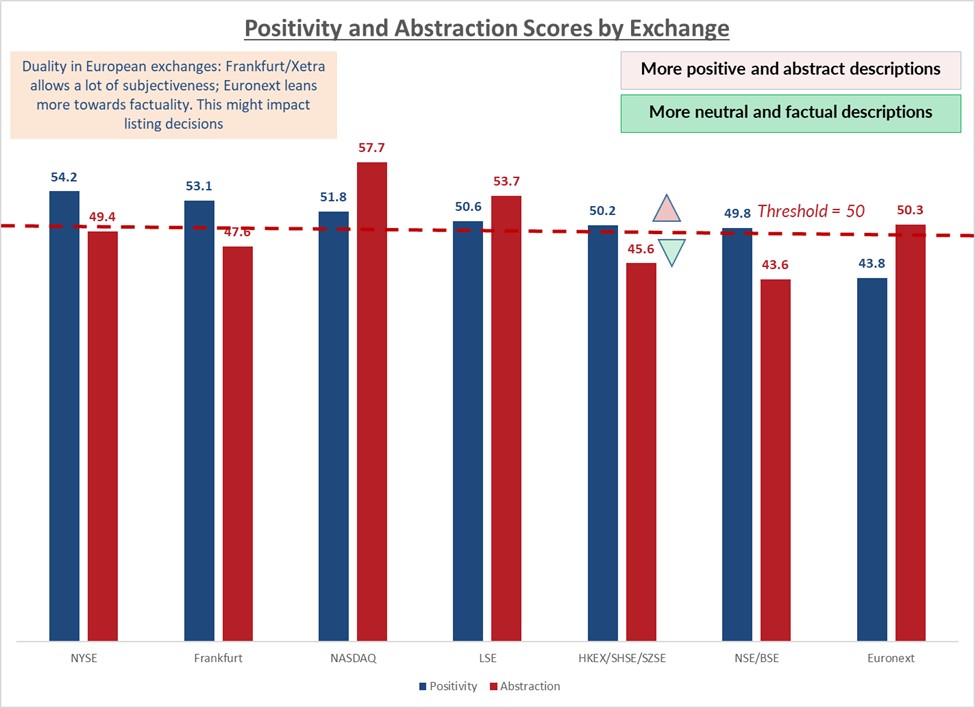Sentiment and Regulatory Latitude in Listings
Introduction
The process of taking a company public is not merely a financial transaction—it’s a storytelling exercise. Companies must craft their business overview section in a way that resonates with investors, aligning how they see themselves with how markets expect them to be framed.
This analysis merges two perspectives:
- Sentiment in IPO prospectuses: how tech companies define themselves based on the first few lines of their business section.
- Regulatory latitude in stock exchanges: which markets allow companies more descriptive freedom in their listings.
Together, they provide a comprehensive view of how companies position themselves strategically during IPOs, based on both self-perception and external regulatory frameworks.
How Tech Companies Frame Their Identity
Sentiment Analysis of Business Overview Sections
A linguistic examination of ~300 new age tech/tech-enabled companies’ prospectuses reveals that companies generally take two approaches in their introductions:
- "Poetic" statements—aspirational, vision-driven messaging.
- "Prosaic" statements—straightforward, factual descriptions.
By measuring positivity and abstraction, a Vision Score was developed, reflecting how much companies emphasize their future aspirations versus their current reality. This score ranges from 0 to 100, with higher scores indicating more poetic and abstract statements respectively.
Key Findings from IPO Sentiment Analysis

Chart A: Most objective business overview: Gaming and Payments
Source: Capital IQ, Company Filing
- Most companies in our sample lean slightly toward aspirational messaging (Vision Score > 50).
- Sectors like online content (Netflix, Youku), food delivery (Zomato), and internet infrastructure are more mission-driven in their introductions. Average Positivity Score: 59.2; Average Abstraction Score: 56.3
- Industries such as payments, logistics, and gaming use factual descriptions focused on market share and financial performance. Average Positivity Score: 42.6; Average Abstraction Score: 49.0
- Companies that debut during market highs (1999, 2008, 2020, H122) or the tail end of private investing cycles (2017, 2019) tend to have higher Vision Scores—often aligning with periods when PAT-negative firms go public.

Chart B: Recent IPOs have a more “prosaic” view of their business. Higher (Lower) score indicate a bias for vision statements (facts)
Source: Capital IQ, Company Filings
Implications for Investor Perception
IPO introductions are not just statements—they reflect strategic positioning.
- High Vision Scores suggest an effort to frame the company as transformative.
- More neutral scores indicate a focus on financial fundamentals and operational strength.
- The timing of IPOs influences sentiment, as companies launching in bullish markets may lean more aspirational, appealing to growth-focused investors.
Regulatory Latitude in Business Overview Sections
Comparing IPO prospectuses across exchanges reveals clear differences in linguistic bias, based on how regulators permit or restrict descriptive latitude.

Chart C: Exchanges in Developed Markets seem to be more lenient towards the language tech companies use in their prospectuses
Source: CapitalIQ, Company Filings
By assessing Positivity (superlative use) and Abstraction (qualitative vs. numerical data), a ranking of stock exchanges by descriptive flexibility emerges:
- Developed markets (NYSE, LSE, Frankfurt, NASDAQ) allow more expressive prospectuses—companies can leverage more vision-oriented phrasing.
- Emerging markets (China’s HKEX, SHSE, SZSE, India’s BSE/NSE) tend to enforce greater factual precision, requiring companies to focus on data-driven presentations.
- Indian IPOs are notably restrained—contrary to some opinions, NSE/BSE tech listings use more neutral, fact-based tones than global peers.
- European exchanges show a split—Frankfurt is highly lenient, while Euronext maintains stricter limits on abstract statements.
Implications for Companies Listing Abroad
- The choice of exchange affects how companies present themselves to investors.
- More lenient exchanges (NYSE, Frankfurt) enable broader storytelling, favoring growth narratives and aspirational positioning.
- Stricter exchanges (Euronext, Indian markets) enforce direct financial disclosures, making them more data-centric.
Conclusion: The Role of Narrative in Market Positioning
The findings suggest a powerful intersection between corporate self-perception and regulatory frameworks:
- Companies consciously shape their identity based on investor expectations—leaning more visionary during market highs.
- Stock exchanges define the boundaries of IPO storytelling, influencing how aspirational or factual a prospectus can be.
- Understanding these linguistic biases is crucial for companies preparing to go public, ensuring their messaging aligns with market norms and investor sentiment.
Future research will continue refining these insights, particularly assessing how Indian IPO sentiment has evolved over time and whether global trends in abstract business messaging impact long-term investor confidence.
Stay tuned for more insights on this topic.
